


|
1689 |
Following the French invasion of the Palatinate in 1688, England and the Netherlands join the League of Augsburg and form a Grand Alliance against the ambitions of Louis XIV.
Peter the
Great becomes the virtual ruler of
Russia and ratifies the Treaty
of Nerchinsk, agreed earlier with Manchu
Emperor K'ang-
In West Africa the Ashanti Empire
is founded by Osei Tutu. Ten years later he defeats
The distinguished composer Henry Purcell produces Dido and Aeneas, the first English opera. He wrote a great deal of music for the church, the theatre, and court entertainment.
His most famous work, The Avenue, Middelharnis, is painted by the Dutch landscape artist Meindert Hobbema. A pupil of Ruisdael, his work influenced a number of English painters.
|
|
1690 |
James II, having landed in Ireland, gains much French and Catholic support, but is roundly defeated by William III at the Battle of the Boyne. He returns to exile in France.
The Mughal leader Aurangzeb conquers most of southern India and reaches the height of his territorial power. With his death in 1707 (AN), however, his empire begins to disintegrate.
John Locke, the English philosopher, publishes his Essay on Human Understanding, and two treatises which have a profound influence on the growth of democratic government. |
|
1692 |
The Salem Witch trials take place in Massachusetts, New England. Whipped up by public hysteria, 150 suspects are arrested and 19 are found guilty and put to death by hanging.
The Glencoe Massacre occurs. A contingent of Campbells, guests of the MacDonalds, turn on their hosts in the early hours and murder their chieftain and 37 of his clan.
After a revolt lasting twelve years, Spain restores its control over the Pueblo people of New Mexico. Nevertheless, they continue passive resistance and retain their cultural identity. |
|
1693 |
The Englishman William Congreve, one of the most outstanding playwrights of the Restoration period, gains fame with The Old Bachelour, his first comedy of manners.
|
|
1694 |
Experiments by the German botanist Rudolf Camerarius prove the existence of sexes in plants, and demonstrate the part played by pollen in the process of fertilisation.
|
|
1696 |
Following the death of his
half-
The English engineer Thomas Savery invents the first water pump to be driven by steam. It had little practical success at the time, but an improved version was not long in coming.
In an incredible feat of
endurance, the Chinese emperor K'ang- |
|
1697 |
The Treaty of Ryswick puts a temporary end to the war between France and the Grand Alliance. By it, Louis XIV loses some territory and recognises William III as King of England.
The Ottoman Turks are routed by Eugene of Savoy at the Battle of Zenta. They admit defeat and lose much of their European territory at the Treaty of Karlowitz two years later.
The woodcarver Grinling Gibbons completes his work in St. Paul’s Cathedral, London. He produced wood carvings for many London churches, country houses and royal palaces.
Stories or Tales from Olden Times, a collection of fairy tales, is written by the French writer Charles Perrault. It includes Cinderella, Puss in Boots, and Little Red Riding Hood.
|
|
1698 |
The so-
|
|
1699 |
The English explorer and
hydrographer William
Dampier leaves on a three-
|
|
1700 |
The Great Northern War breaks out between Sweden and her neighbours. The “hero King” of Sweden, Charles XII, defeats the Danes and then crushes the Russians at Narva (1701).
Charles II of Spain dies and leaves his empire to Louis XIV's grandson, Philip of Anjou. He accepts the Spanish throne and plunges Europe into the War of the Spanish Succession.
|
|
1701 |
The Act of Settlement accepts Anne, the Queen's sister, as next in line, but stipulates that, should she die without an heir, the throne was to pass to the Protestant house of Hanover.
Jethro Tull, the English agriculturist and inventor,
constructs a horse- greatly simplifies the
process of planting seeds. He later develops a horse-
The Scottish pirate William Kidd is hanged. Having been sent out to the Indian Ocean to curb piracy, he turned pirate himself and preyed on shipping along the coast of East Africa. He was arrested in New York. |
|
1702 |
In March, William III dies of lung cancer soon after a riding accident. He is succeeded by Queen Anne, the Protestant sister of his wife, Queen Mary II. |

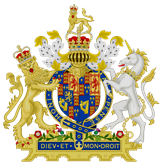






 the state of Denkyira and begins trade with the Dutch at
Elmina on the coast of modern Ghana.
the state of Denkyira and begins trade with the Dutch at
Elmina on the coast of modern Ghana.
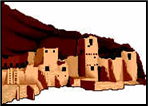

 The
German born artist
The
German born artist  The
Frenchman
The
Frenchman 
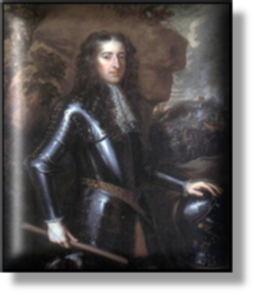
 xxxxx
xxxxx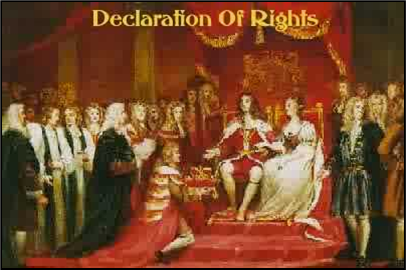 xxxxx
xxxxx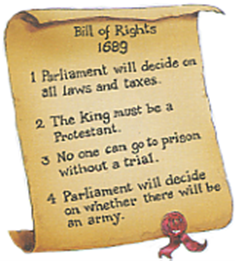 e
rule of law. Indeed, both monarchs accepted their office with
strings attached. By the Bill of Rights which offered them the
English throne,
e
rule of law. Indeed, both monarchs accepted their office with
strings attached. By the Bill of Rights which offered them the
English throne, 
